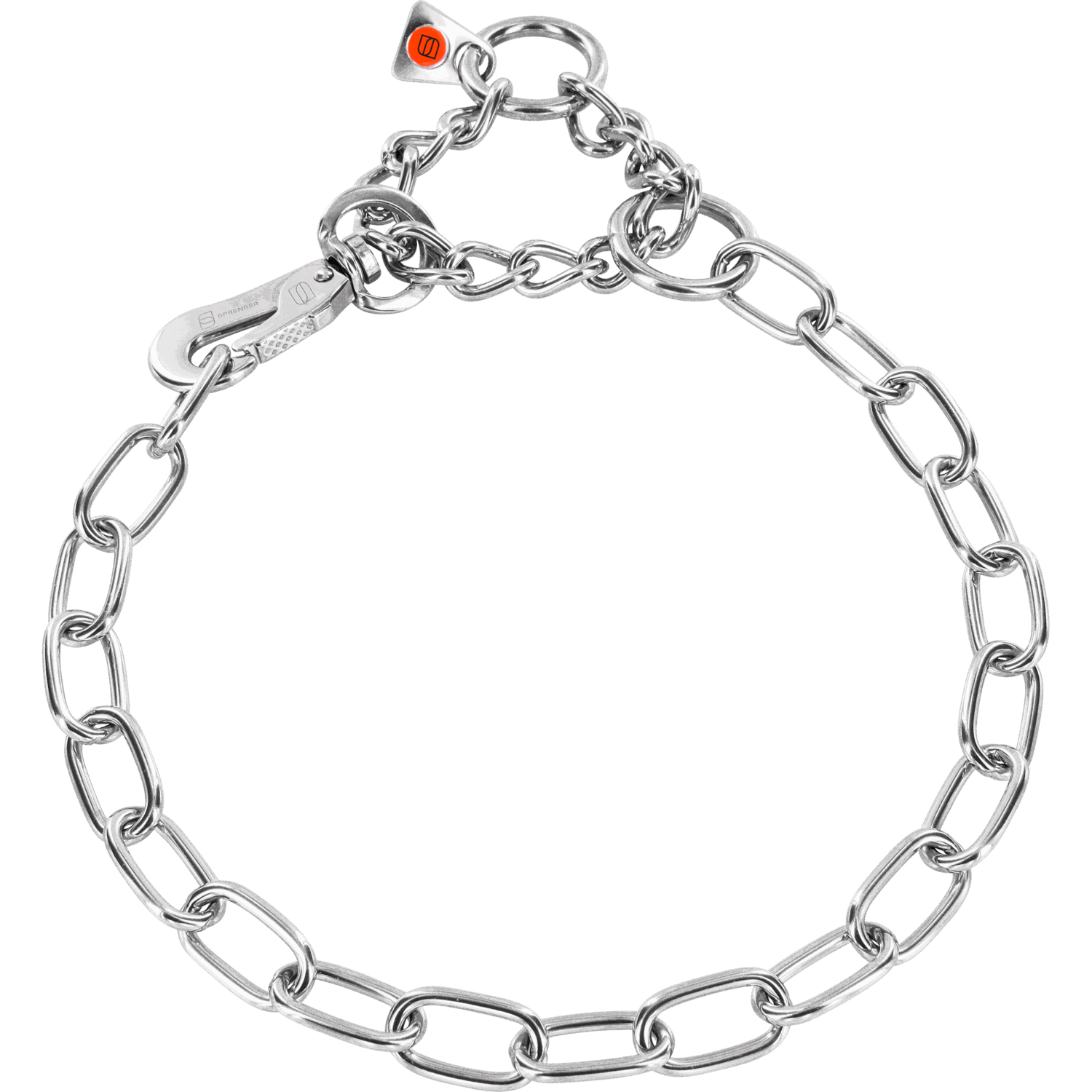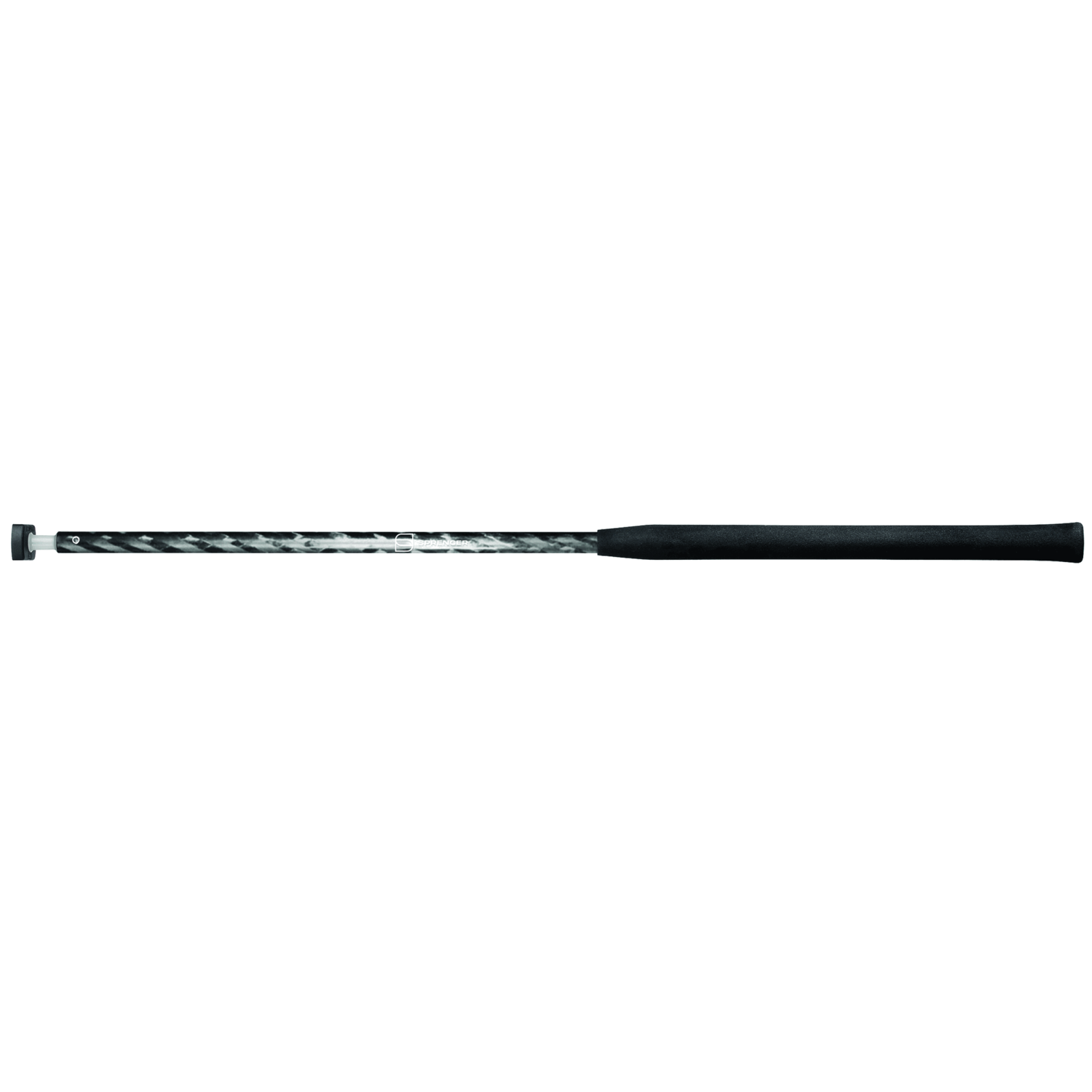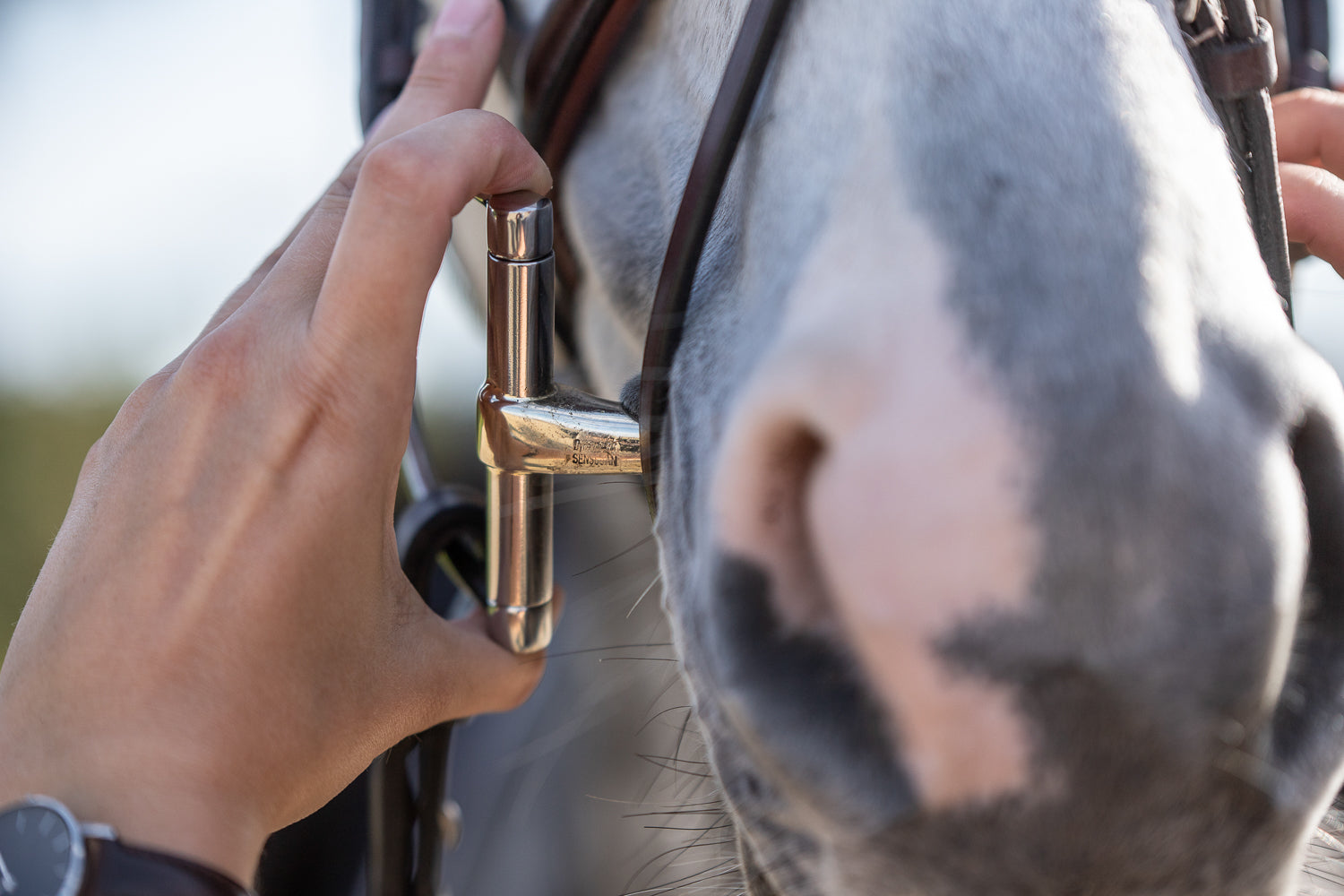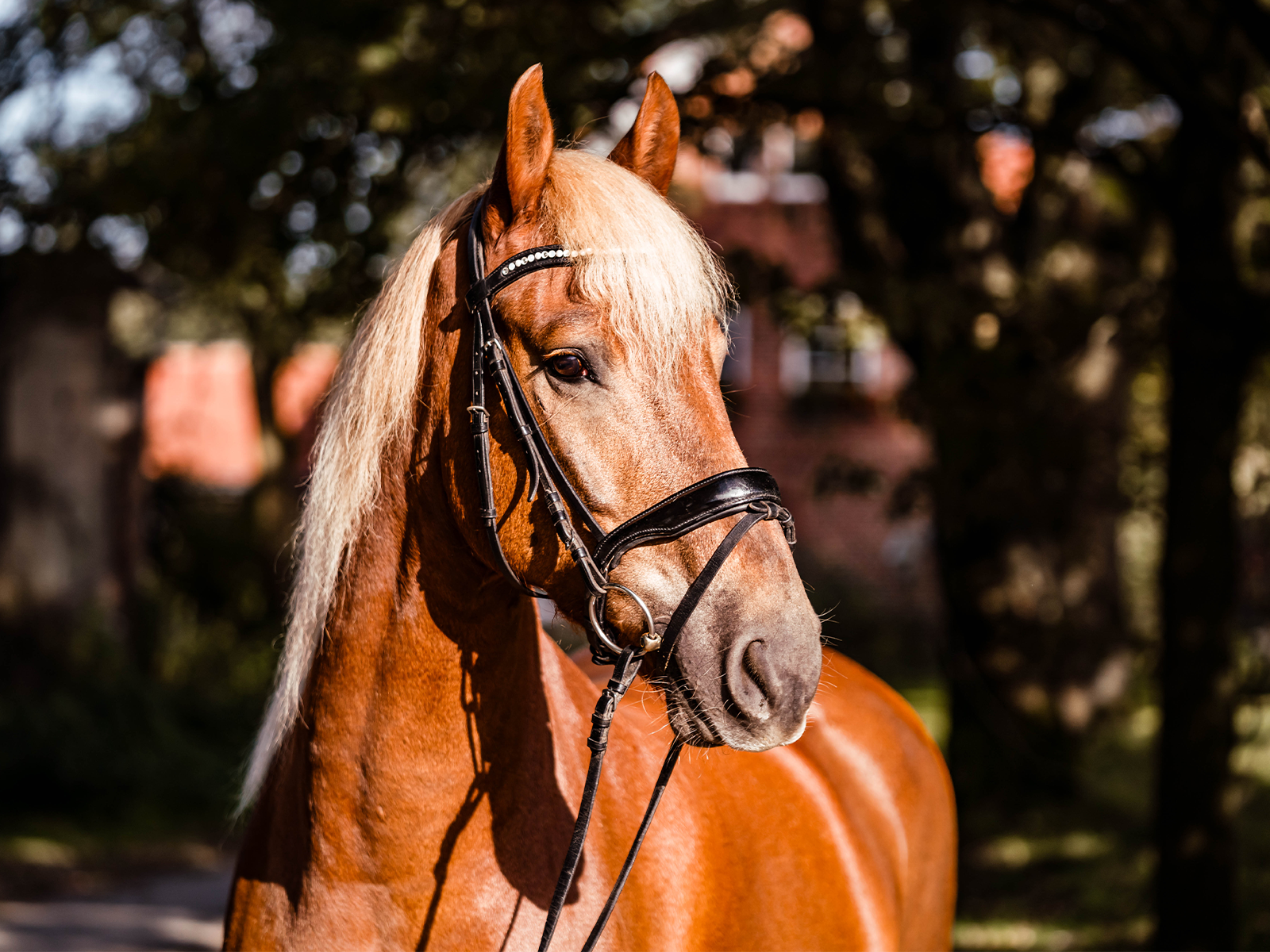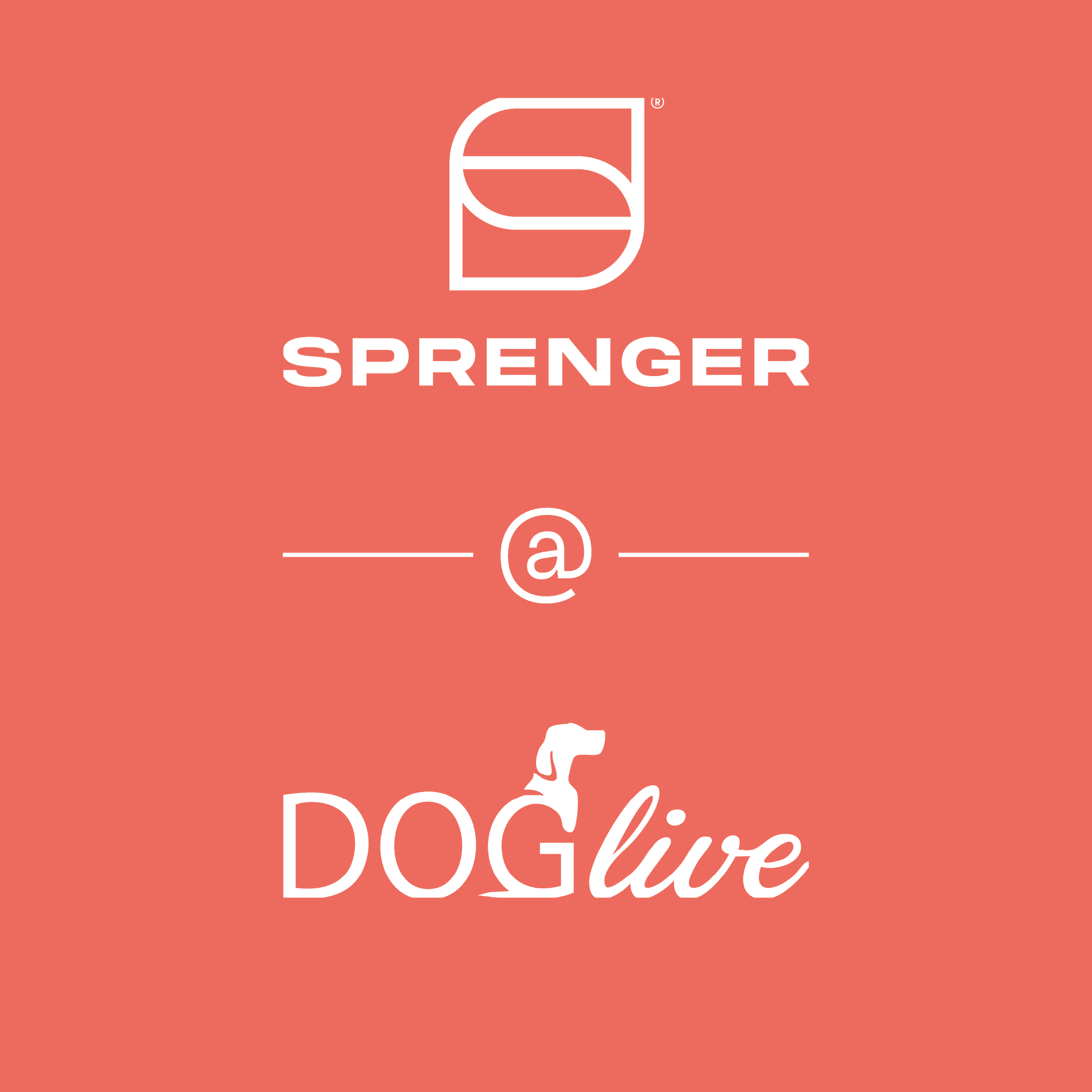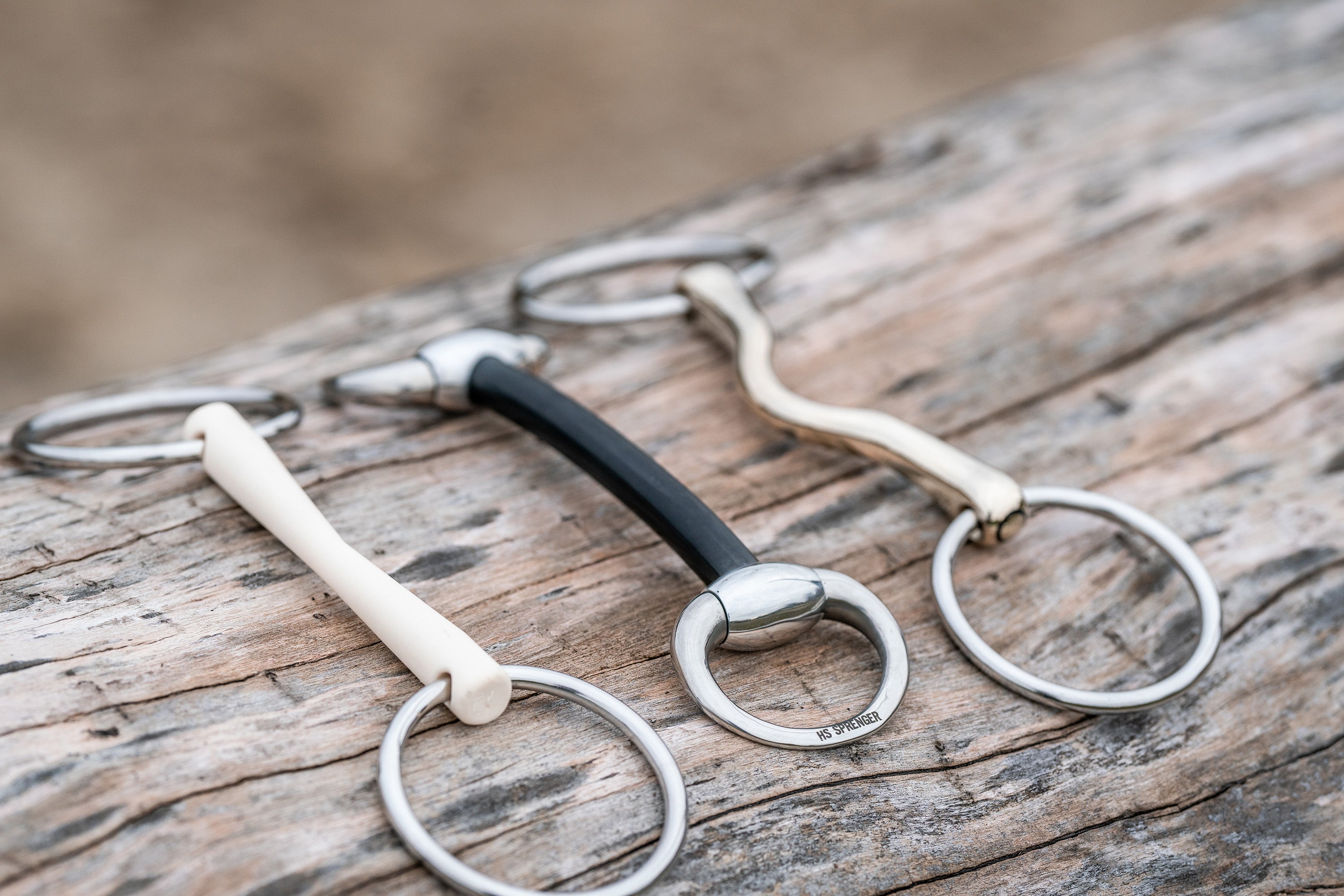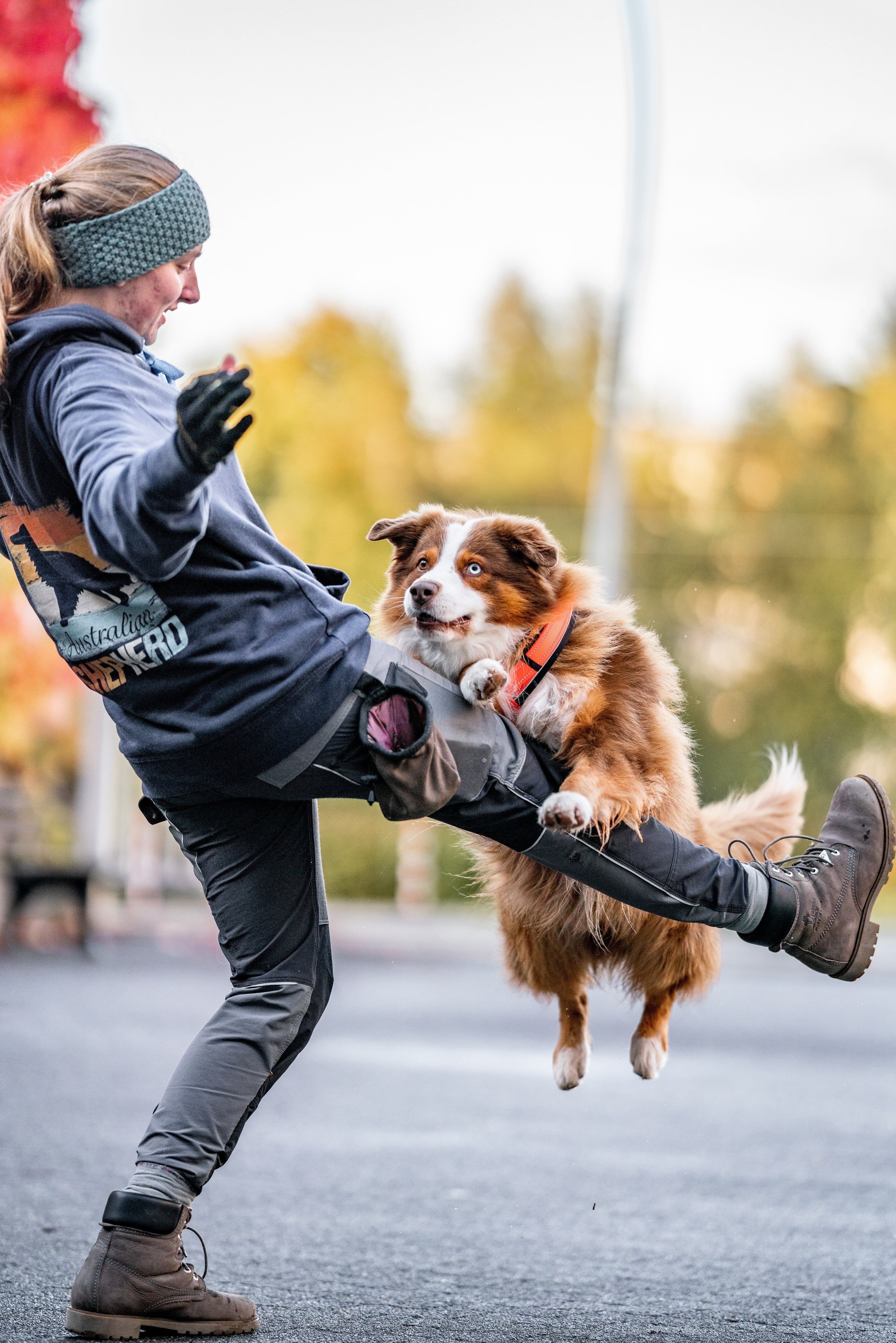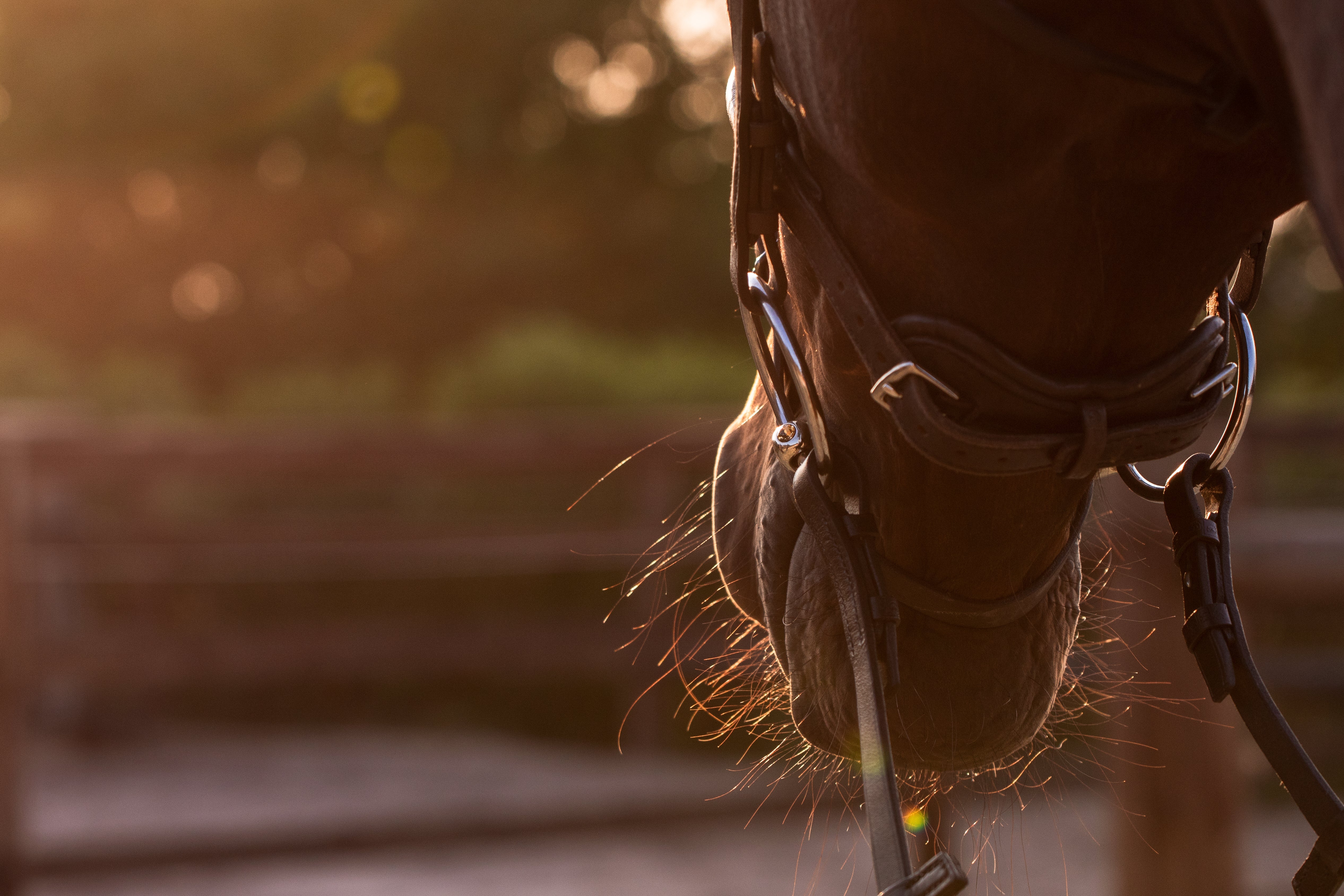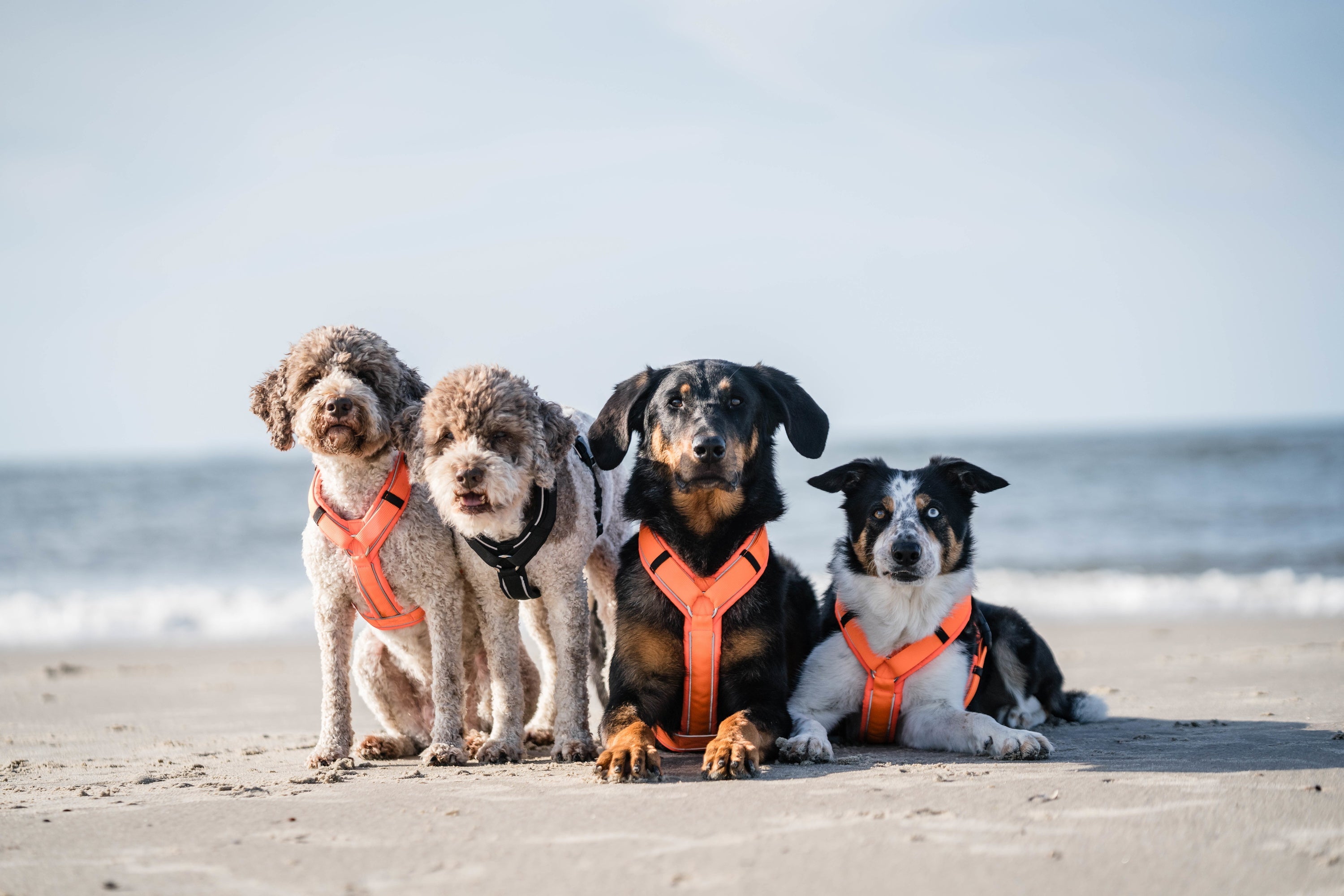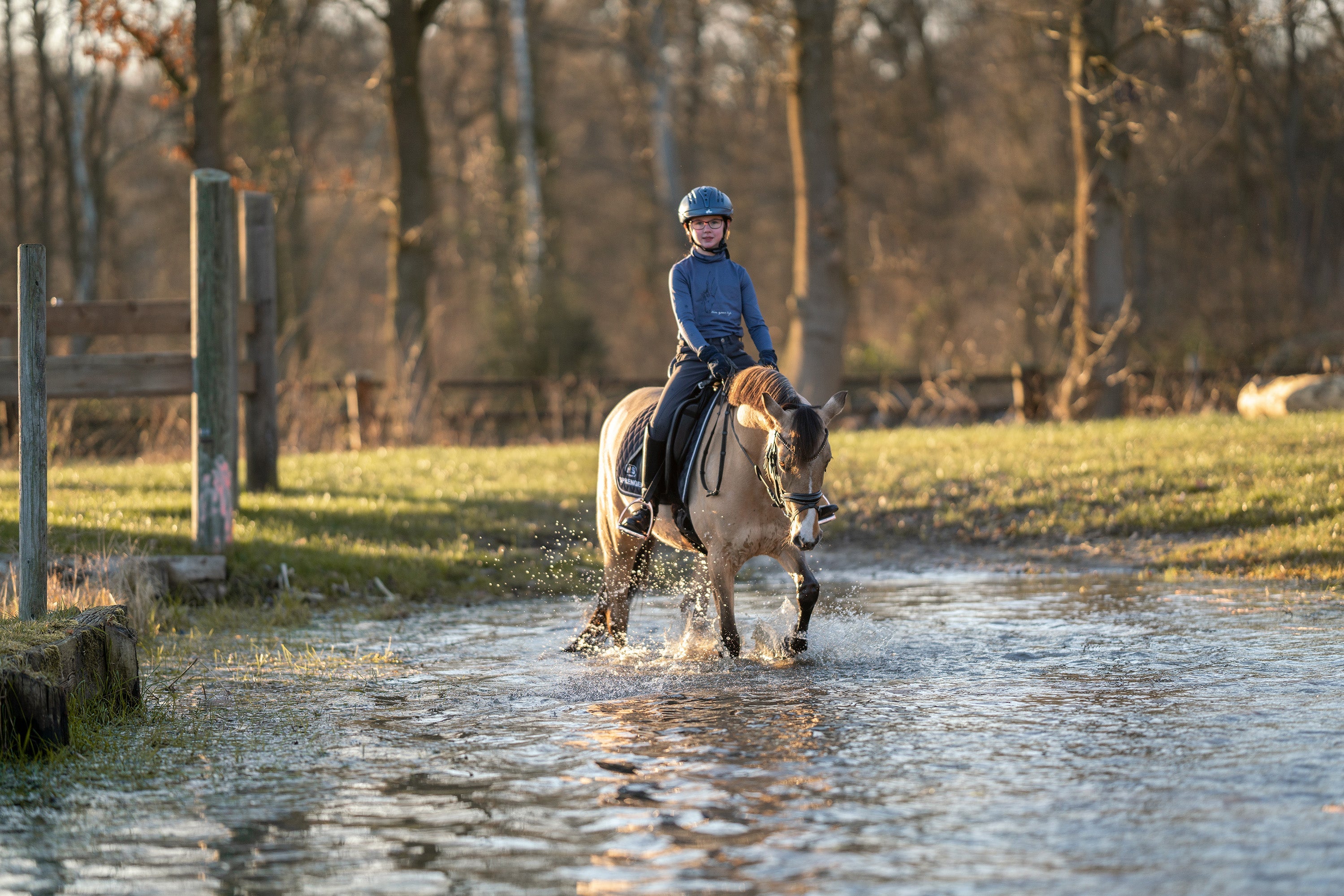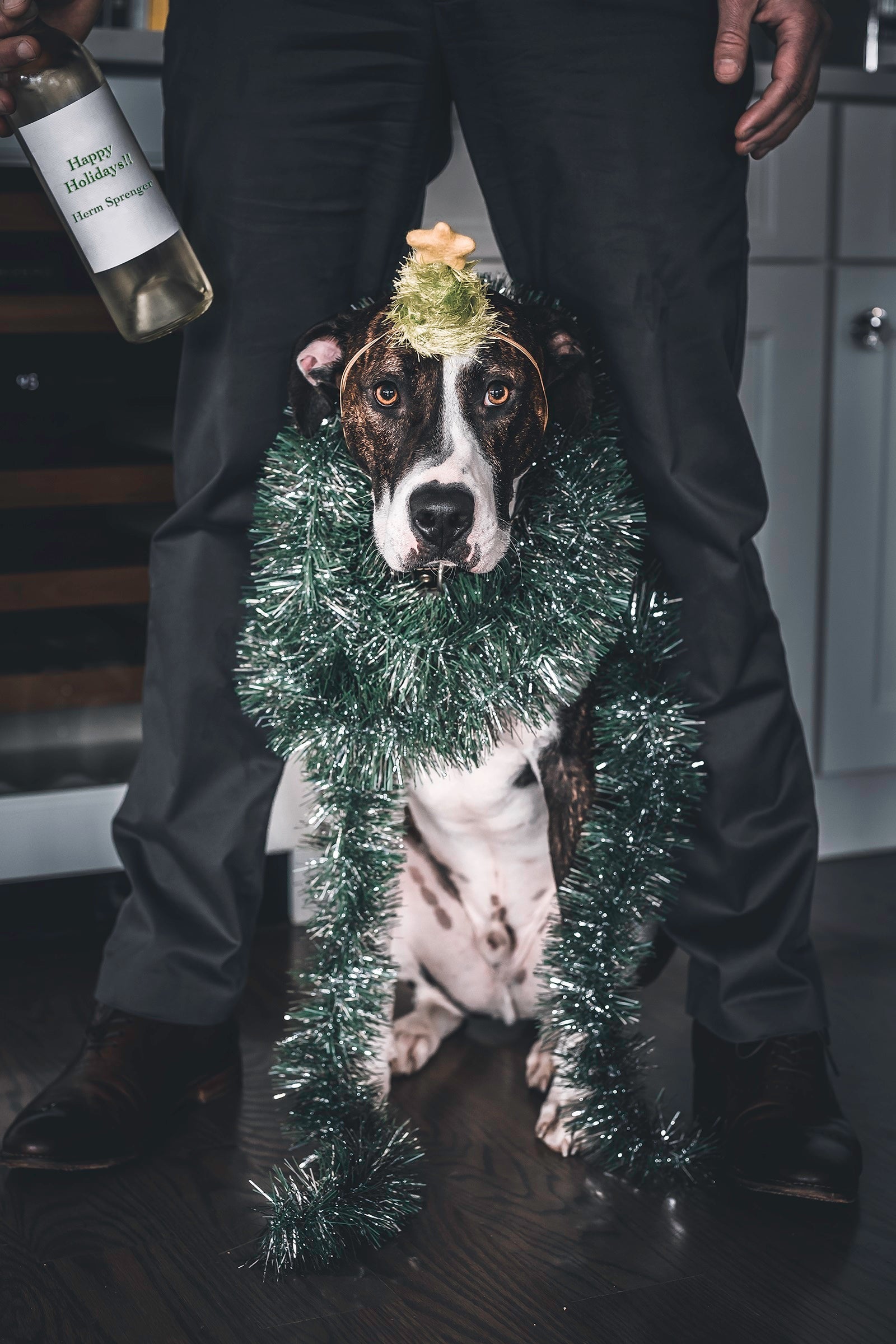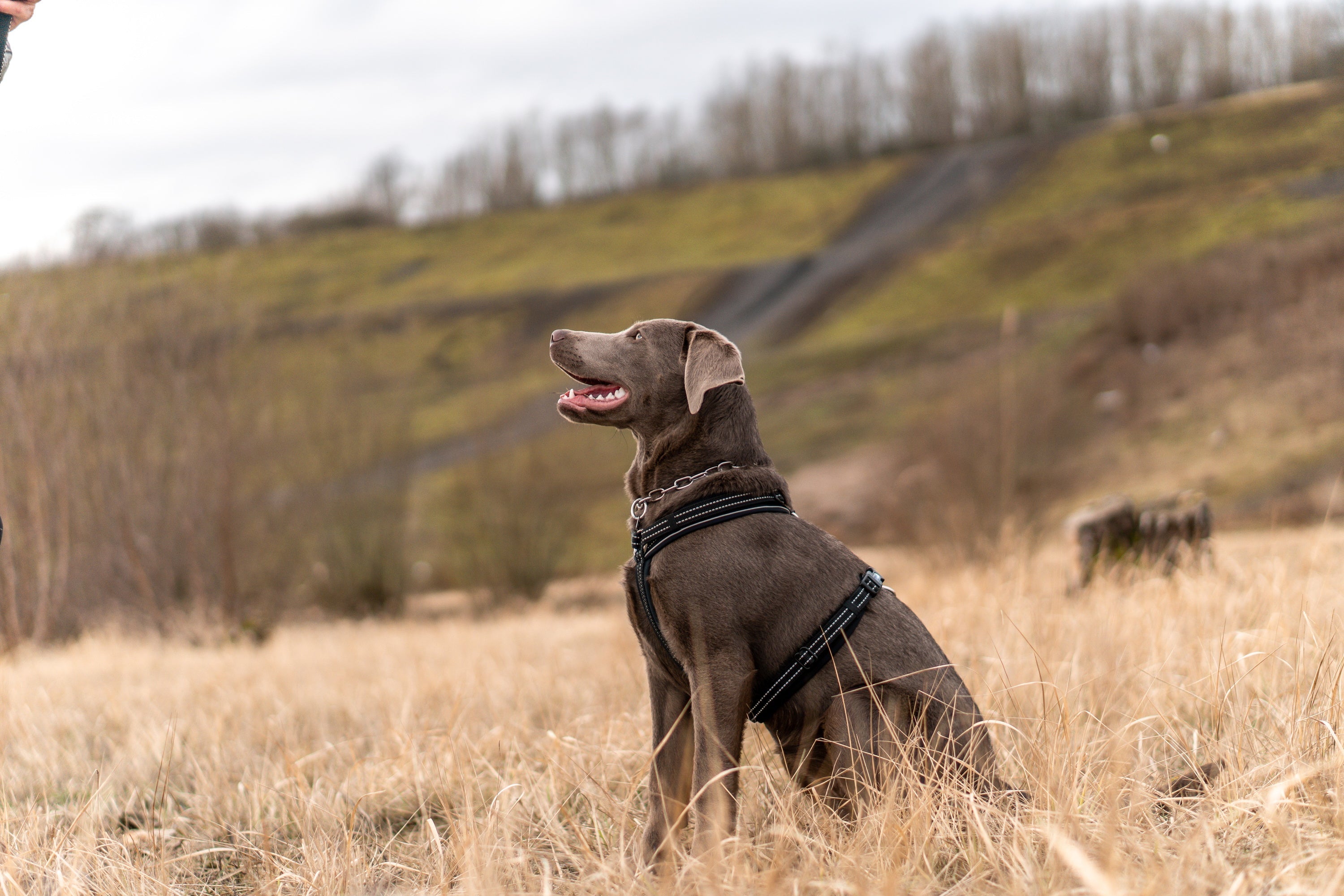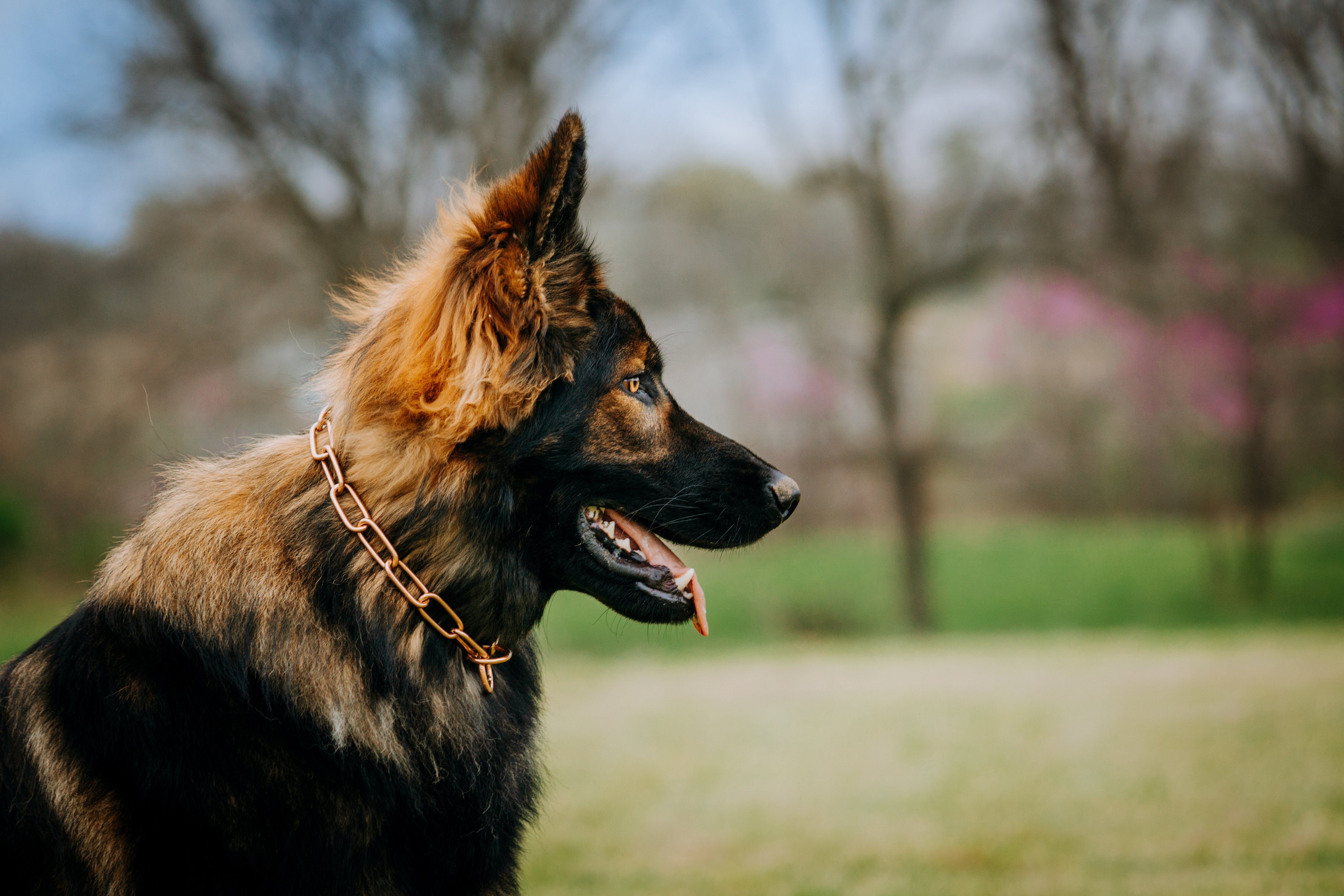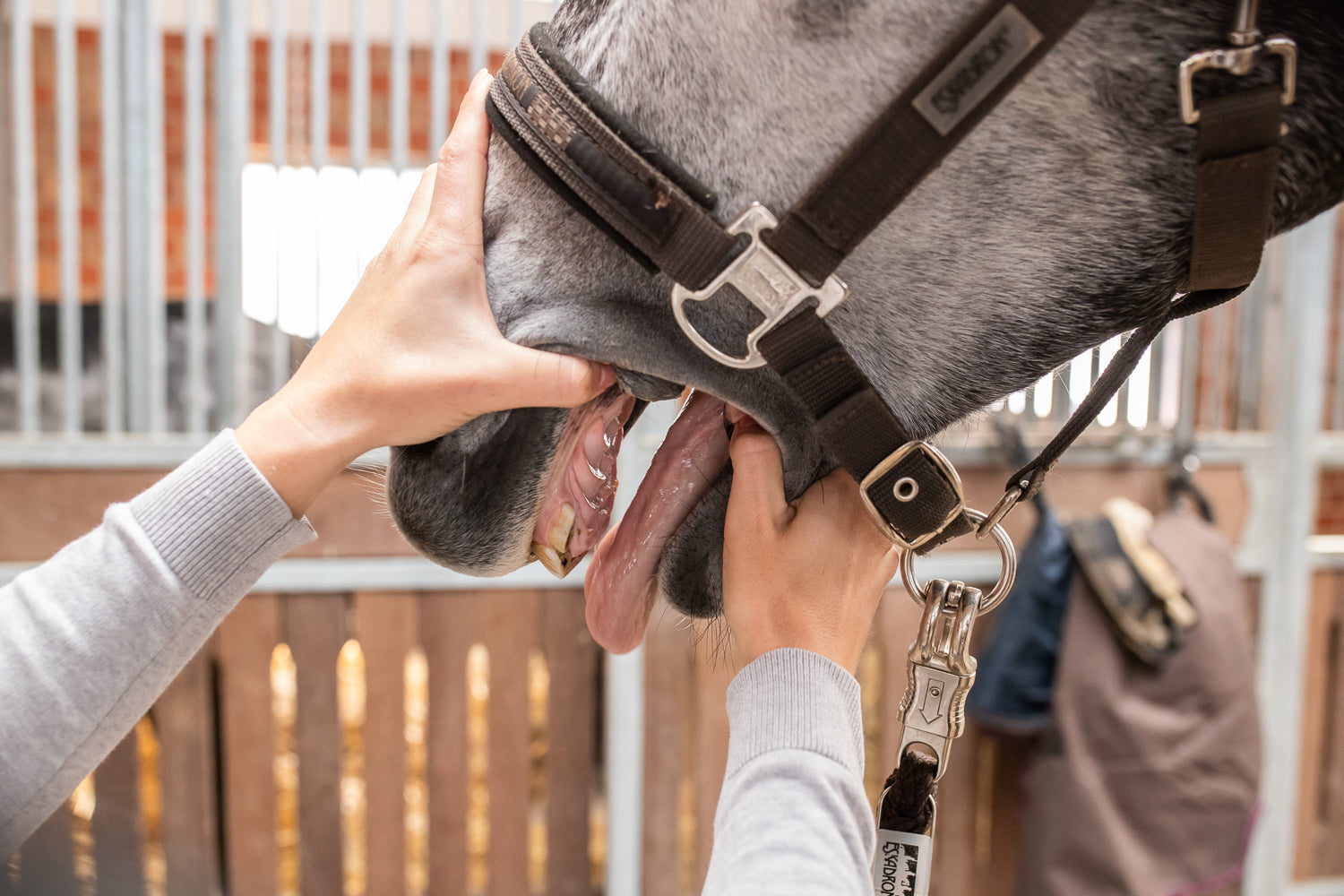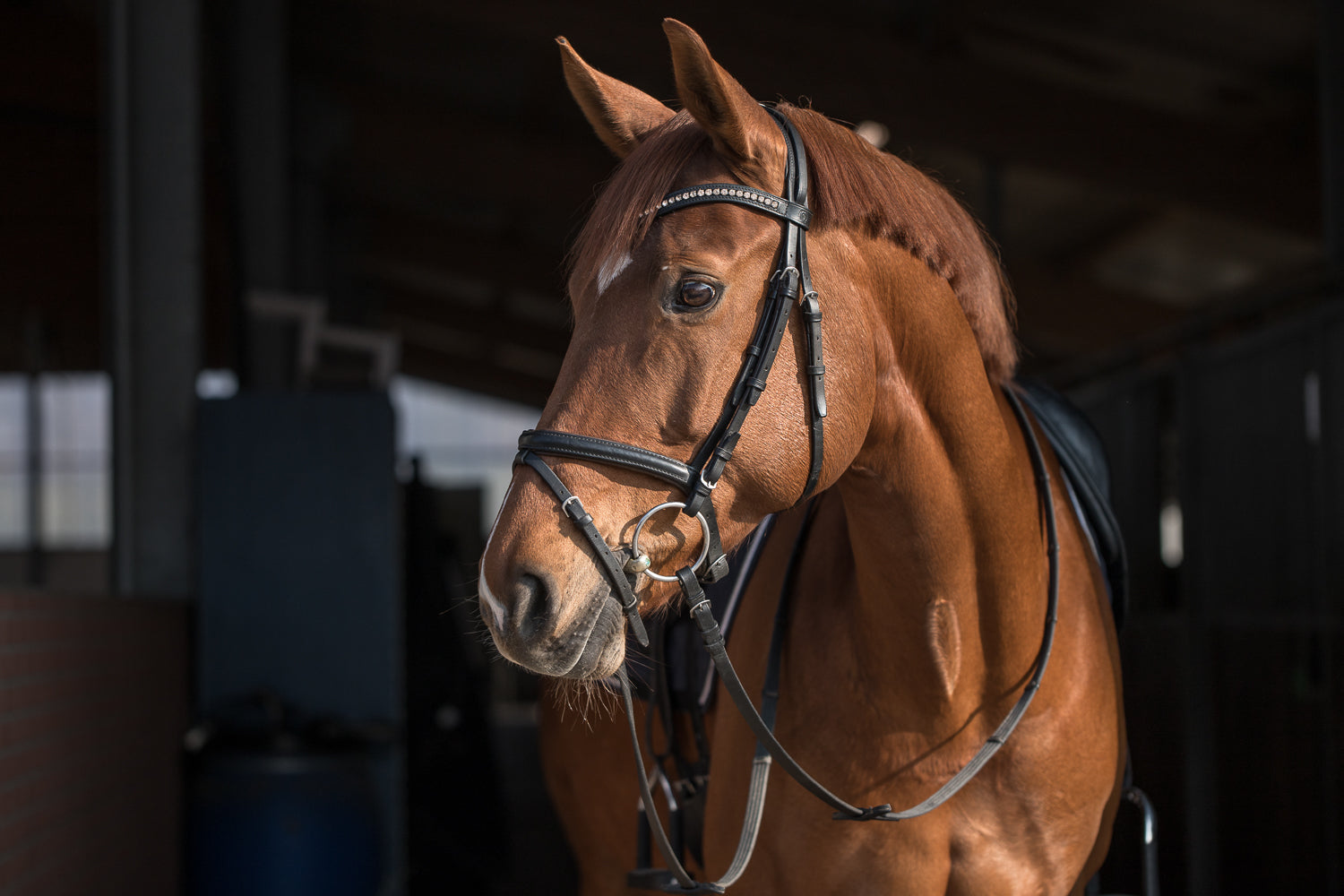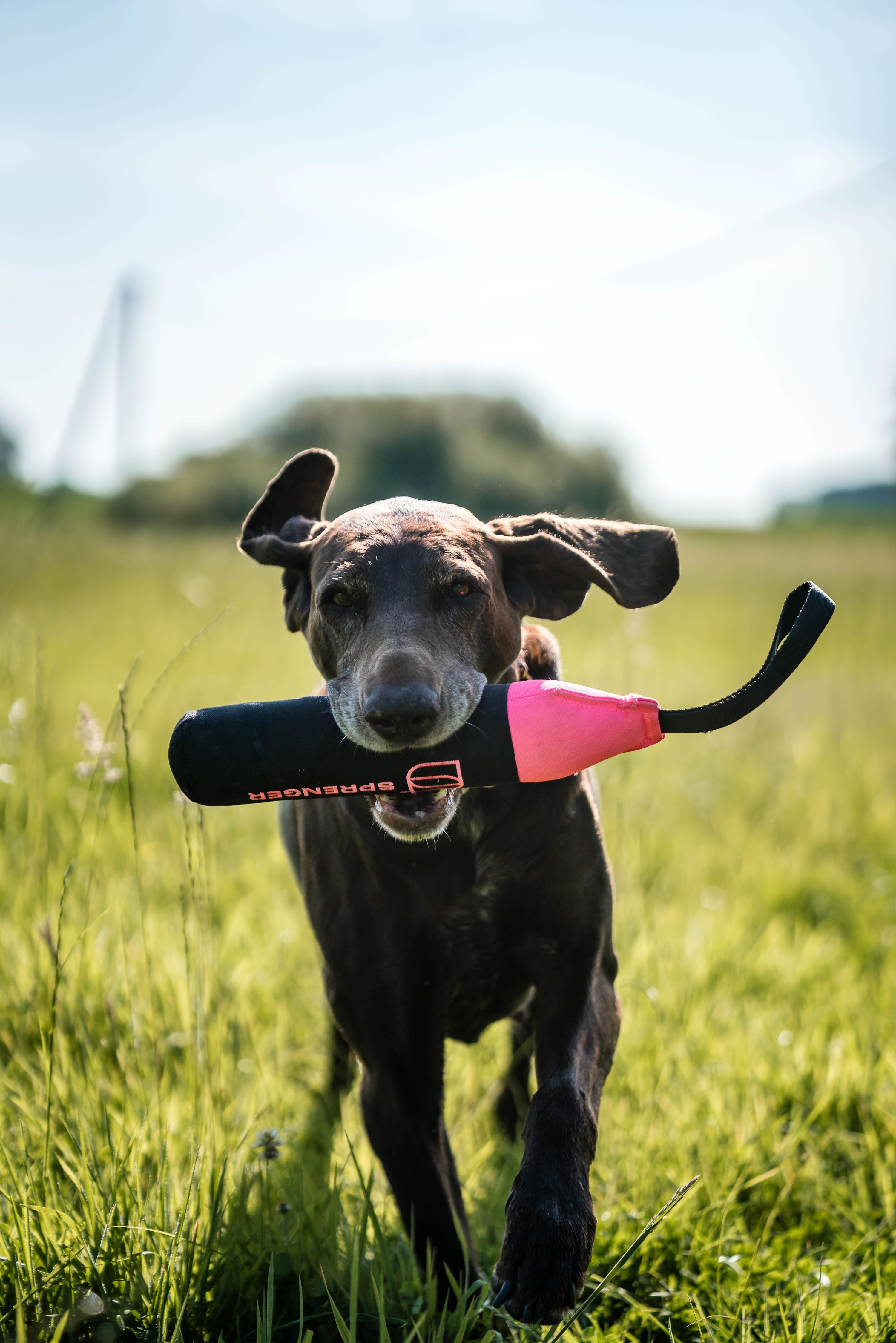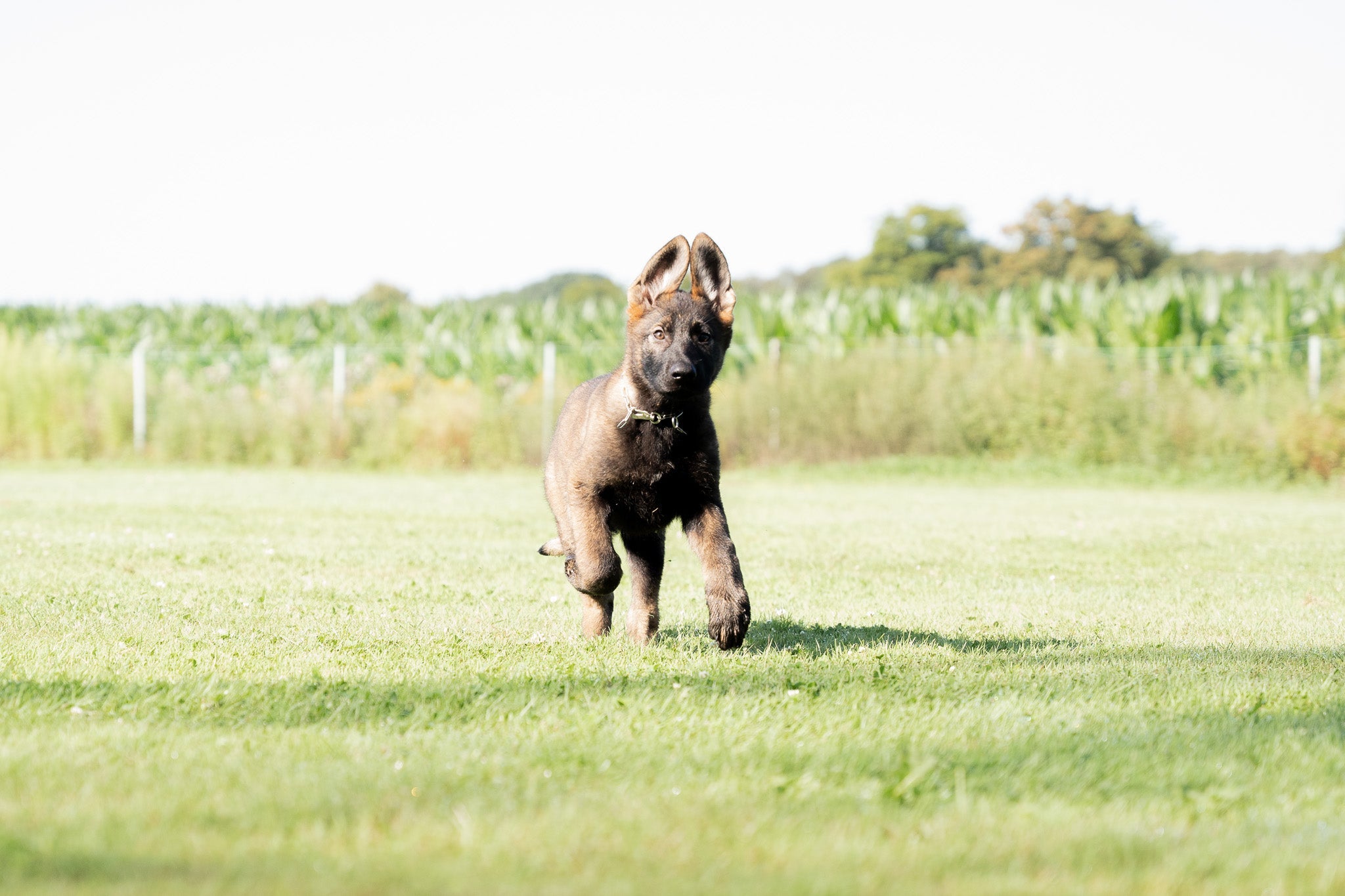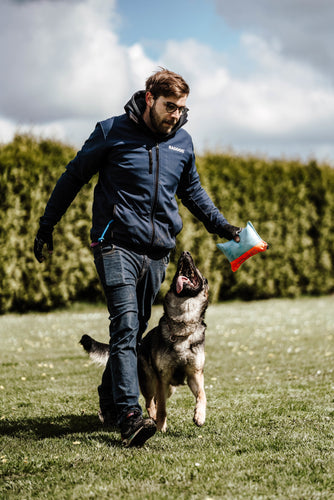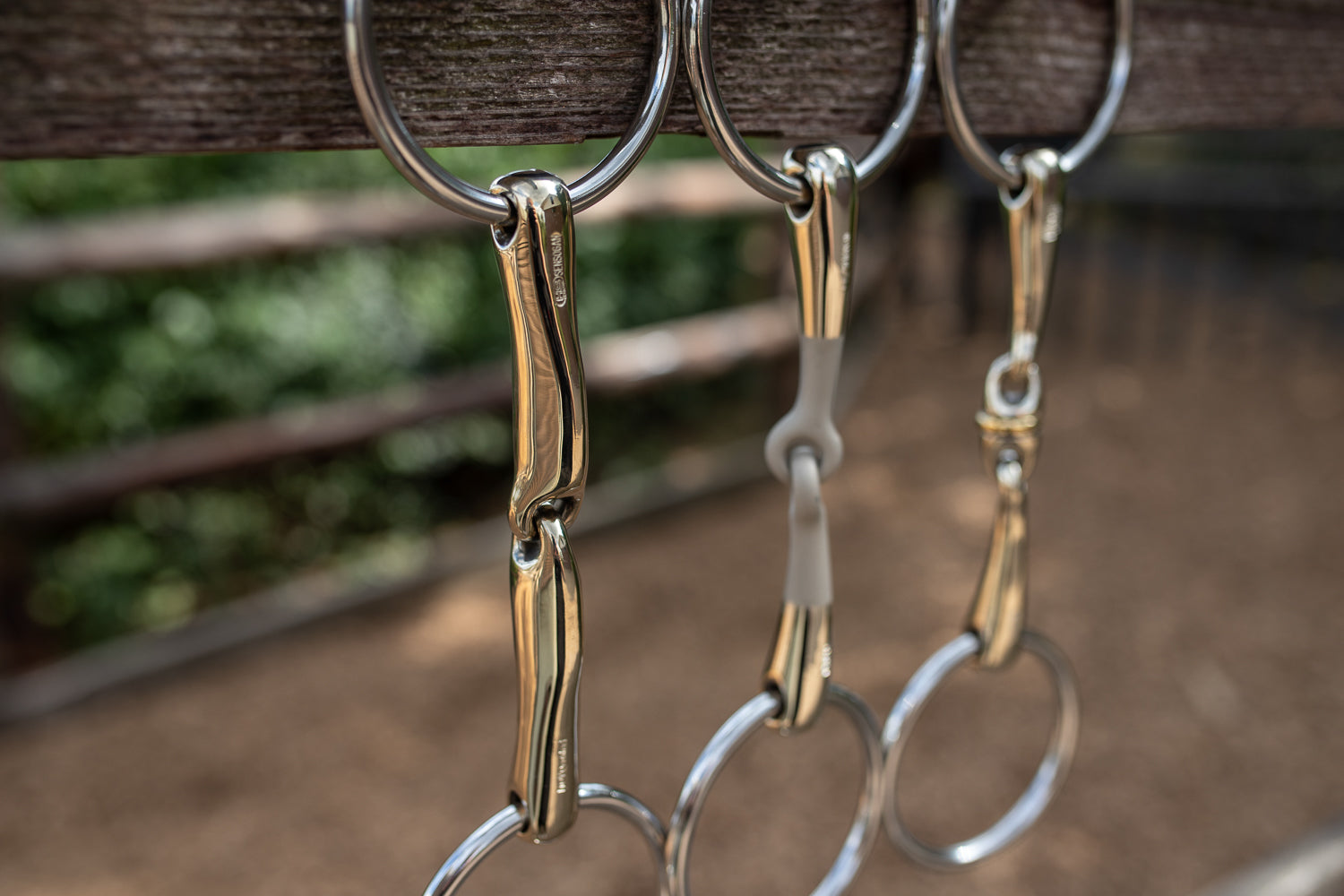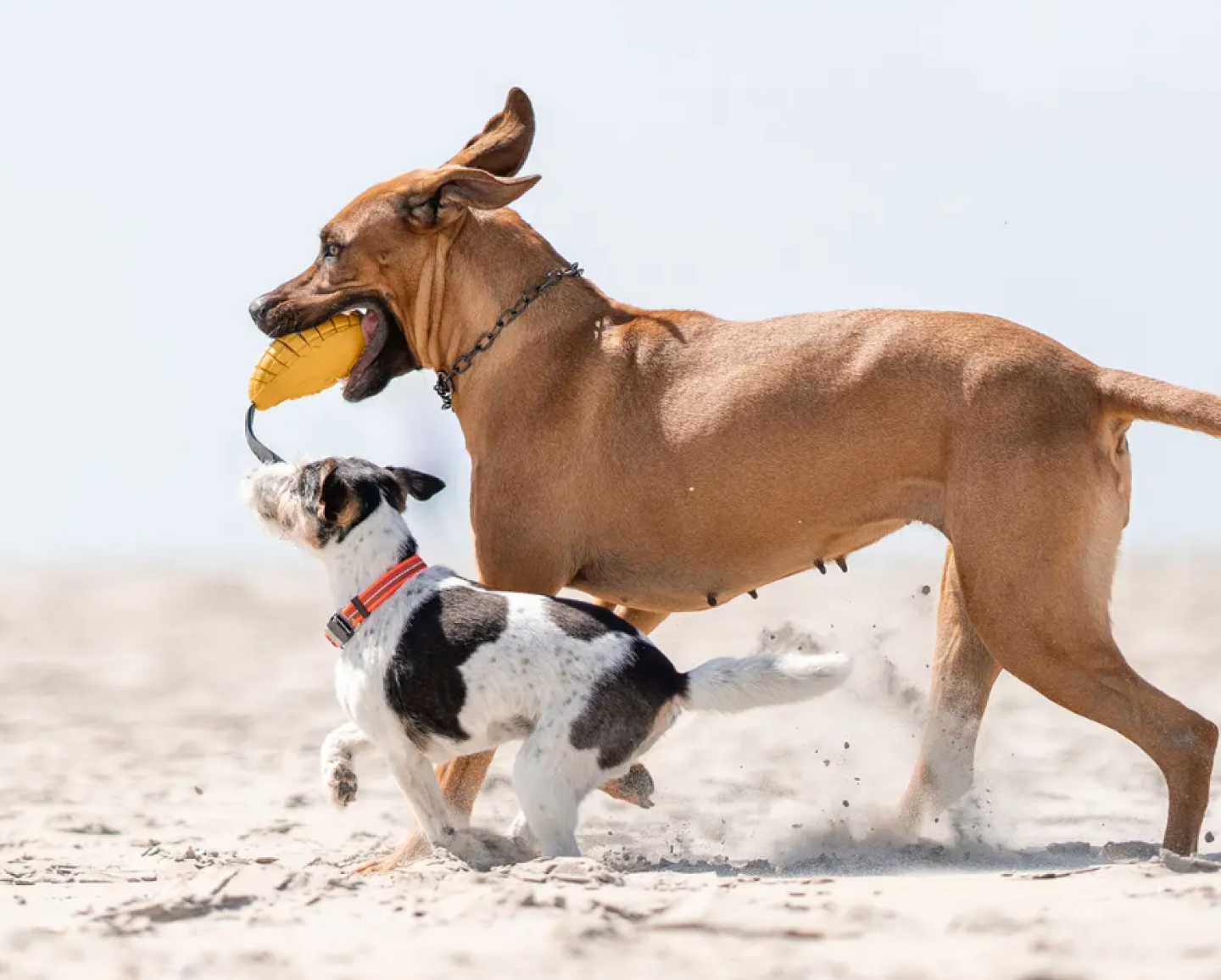
For many people, walking their dog during fall or winter means one thing above all: walking in the dark.
To ensure that people and dogs are safe on evening and early morning walks and can also be seen by other walkers, cyclists and drivers, you need to make yourself and your dog “visible”.
We have summarized our best tips on safety for dogs in the dark and the best ways to make your dog visible in the dark in this guide!

How do you make a dog visible at night?
That's actually quite simple: with the right dog equipment and accessories, you can make your dog visible in the dark.
These products can help you walk your dog in the dark:
- Light-up collars
- Reflective collars
- Reflector harnesses
- Reflective scarves
- Reflective vests or coats
- Luminous tags or reflective pendants
- Luminous velcro straps and attachable reflectors
- Reflective leashes
The rule here is: A lot helps a lot!

Reflective collars
Reflective dog collars can be worn like a “normal” collar every day and at any time of day. Thanks to the integrated reflective material, they use the light of other road users to make your dog visible in the dark.
Unlike light-up dog equipment, reflective collars don't bother your dog, he doesn't have to get used to them, you don't have to remember to put on a different collar than during the day and there's no battery to run out at an inopportune time.
Our tip: When choosing a collar, you should consider how long your dog's coat is and how well the reflective collar is visible among it.
As an alternative to integrated reflective material, non-reflective collars can also be fitted with separate reflective elements or tags and help to make your dog more visible when walking in the dark.
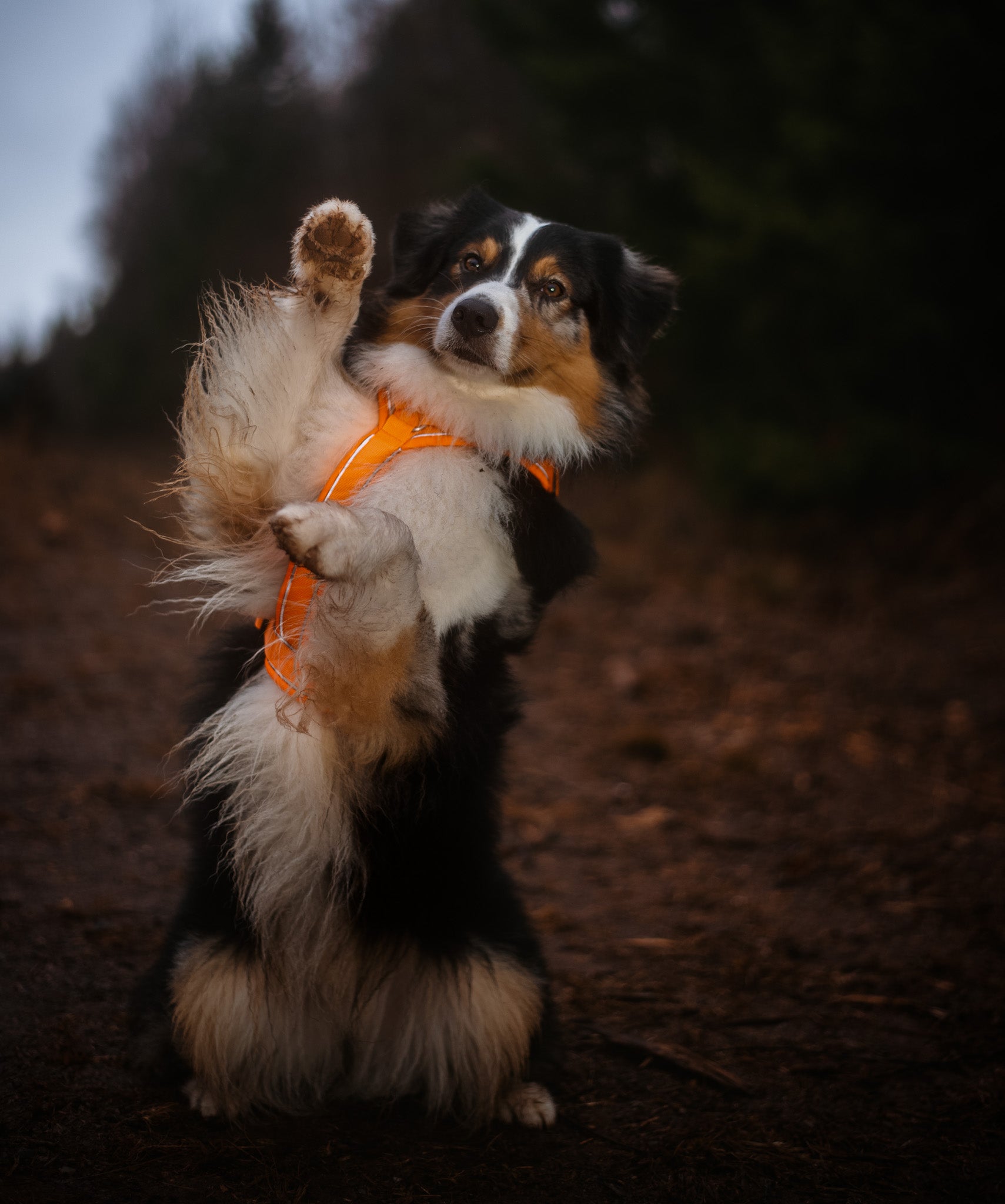
Reflector harnesses
Reflector harnesses or reflective harnesses work in the same way as reflective collars, but have one major advantage: they make a larger area of the dog visible and give other road users a better sense of how big the dog is. We also recommend such harnesses for dogs with longer fur.
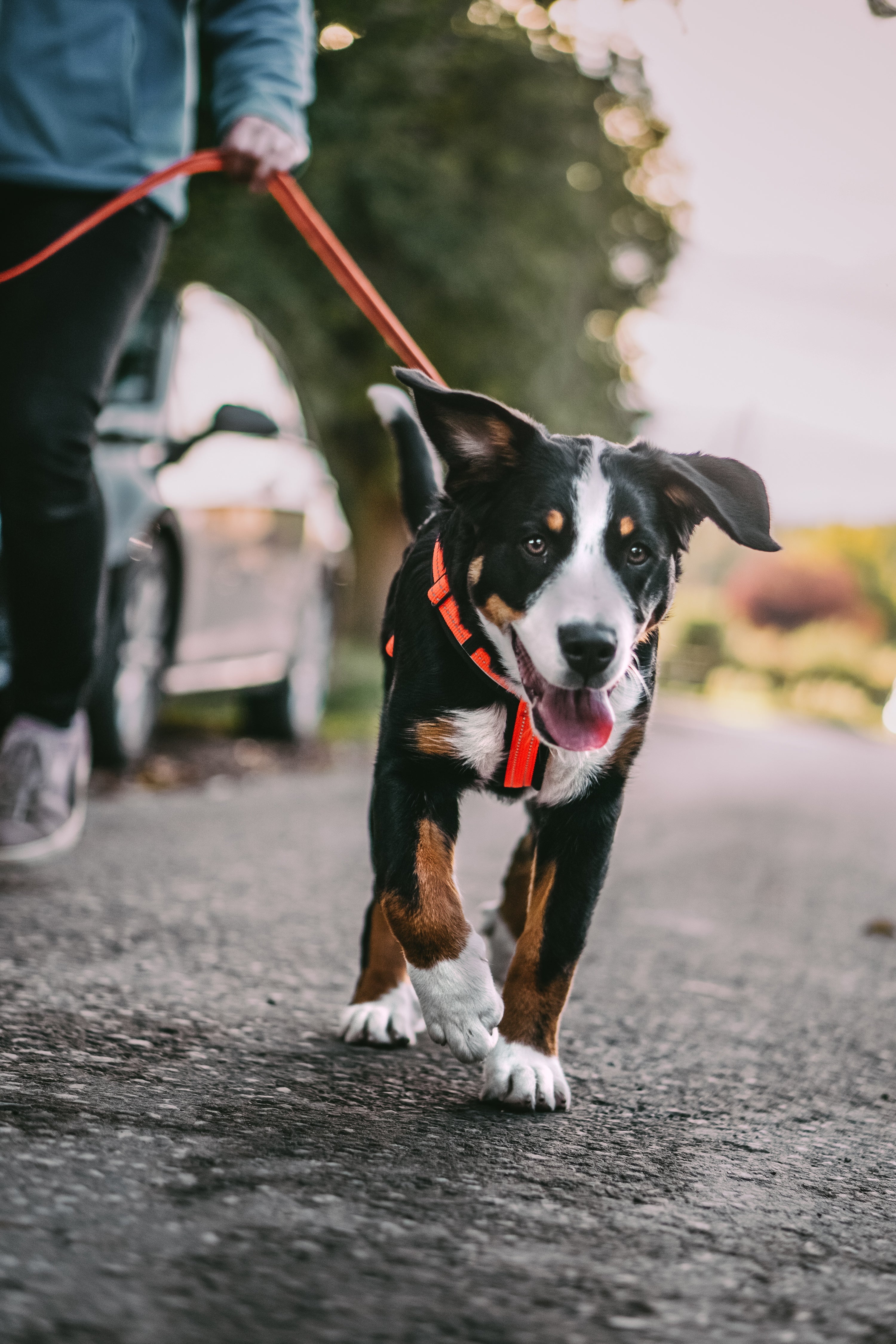
Reflective dog leashes
Reflective leashes not only help you to keep your dog safe, but also make it easier for other road users to see whether your dog is on a leash and where the leash leads - so neither short nor long leashes become a tripping hazard!
Our tip: With a reflective tracking leash, you can give your dog a little more space to run after dark and make it easier to see and track where your dog is.
Find out how to find the right dog leash for you and your dog here.
Increased safety for dogs in the dark through the right behavior
Dog safety in the dark depends to a large extent on being prepared and behaving correctly. Our tips for correct behavior when walking your dog in the dark:
- Walk on the right side of the road, i.e. towards traffic. This way, you and your dog will not only be seen in time, but earlier.
- Don't use headphones or distract yourself in any other way, as you may notice dangers too late, especially in the dark.
- Choose routes where you feel safe. It is advisable to choose routes with good lighting, without heavy traffic and, especially for dogs with a hunting instinct, without crossing game.
- Always keep your dog on a leash, because even well-trained dogs or dogs with a good recall can behave differently in the dark. The different visibility and possibly tense behavior on your part can lead to fear or even aggression towards passers-by or other dogs.
Can dogs see in the dark?
Not only can your dog see in the dark, it can usually see better than you!
For this reason, it is particularly important that you keep a close eye on your dog and keep him under control on the leash so that you are not too late in the event of dangers such as poisoned bait and can intervene in good time.
Dogs are particularly good at spotting movements in the dark, which is why dogs with a hunting instinct should also be kept on a leash in the dark. Dogs can also use their other senses, such as their good sense of smell or their excellent hearing, to “see” and find their way in the dark.
Exceptions to this are, of course, dogs with eye diseases, other sensory impairments or senior dogs.
Dog is afraid of the dark
Even if most dogs are not generally afraid of the dark, it unfortunately sometimes happens that dogs are afraid when walking in the dark. There can be many reasons for this: bad experiences of the dog in the dark, deteriorating eyesight in older dogs or generally insecure and anxious dogs that react more strongly to stimuli in the dark.
However, especially for dog owners who do not have their own garden, walks in the dark during the fall and winter can hardly be avoided. If your dog is anxious, you can try the following tips to help him:
- Limit your walks to short routes that your dog already knows well and has been able to explore in daylight.
- Try to remain calm and confident yourself. It can be helpful to use a headlamp or flashlight on walks so that you are not frightened by suddenly appearing walkers, cyclists or cars - this can also help your dog to be more aware of its surroundings.
- The right equipment for your dog is even more important if he is afraid of the dark. Not only to increase his visibility, but also to prevent him from running away out of fear and putting himself and others in danger - so a leash is a must!
Walking in the dark: Humans need the right equipment too
The same applies to you: make yourself visible!
Use reflective clothing or one or more of your dog's accessories. In addition, you should preferably wear light-colored clothing so that you are much less blurred for other road users when walking in the dark.
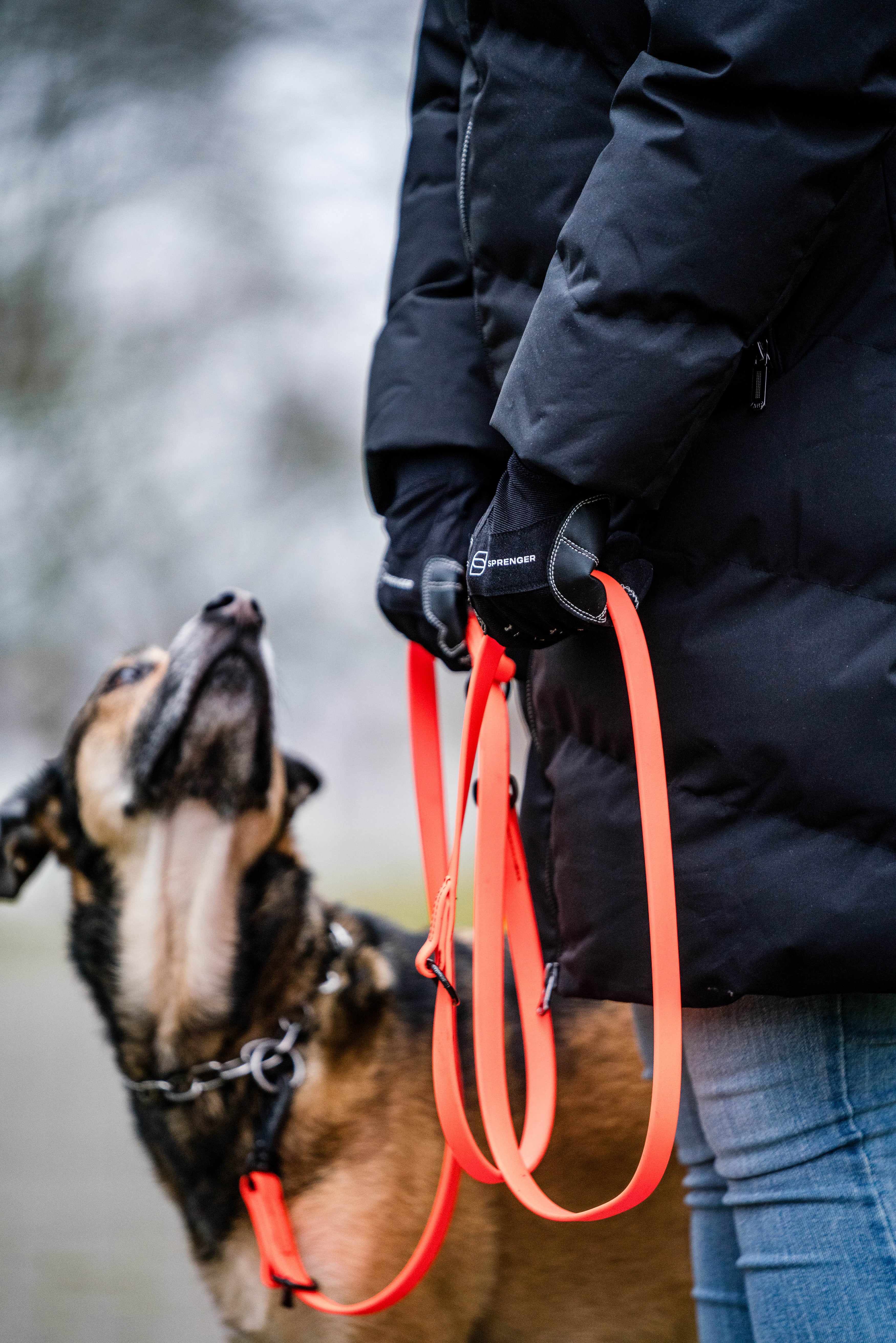
SPRENGER Gloves
Our tip: When walking your dog in fall and winter, darkness is not the only problem. The cold and wet weather can also affect your safety. That's why we recommend using gloves with grip in addition to leashes with grip.
PART OF YOUR PASSION.








